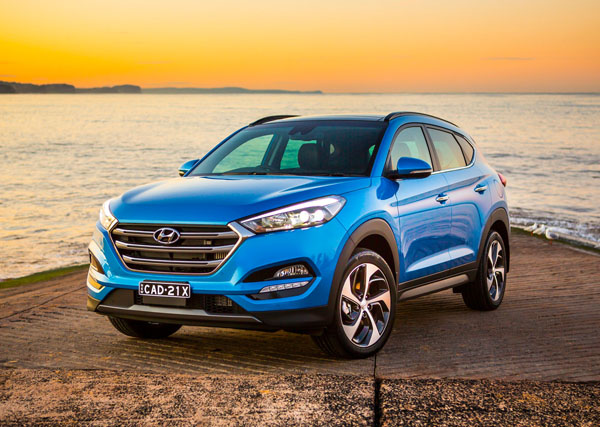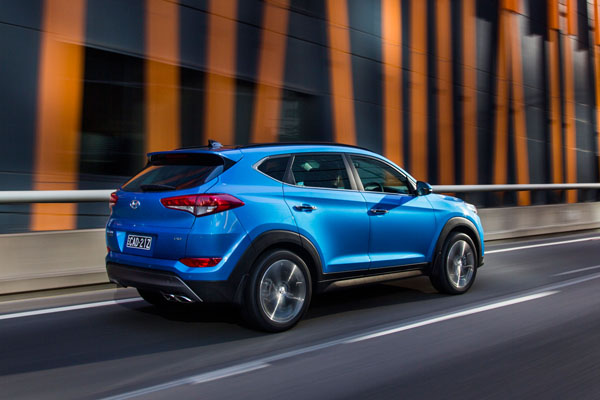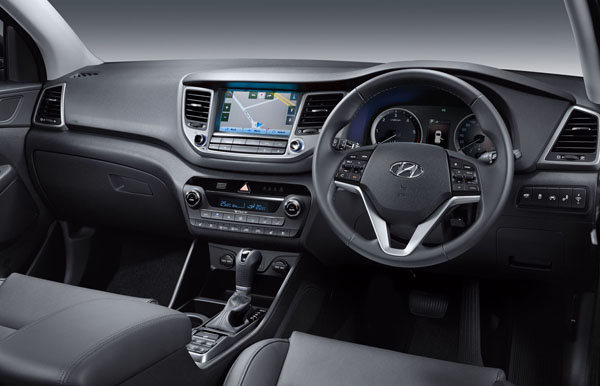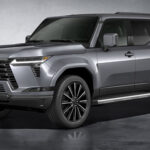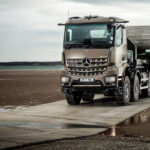Hyundai Tucson is back in Australia, albeit in a totally new format to the older model sold here till 2010. It replaces the Hyundai ix35 which did reasonably well in the sales race and the Australian importer is confident Tucson will do at least as well.
Sleek styling, a suspension system with considerable Australian engineering input, and the latest infotainment technology lift the all-new Hyundai Tucson into an altogether new class. And its growth in size has seen it lifted into a different category, now being classed as a medium SUV rather than as a small SUV by industry statistician Vfacts.
Tuscan’s styling is even sleeker than that of big brother Santa Fe, with a strong grille and stylish headlight and foglight surrounds. The rear is particularly neat with horizontal and curved lines line in the tailgate that take the bulk out of the appearance.
Inside, the Tucson is less adventurous in its shape. Rather generic Hyundai, it’s sensible, the controls and dials are easy to see and use, the centre screens are a decent size, the seats look good and support well, but it’s hard to see anyone getting excited about it.
The plastics are of good quality and have the sort of soft-touch feel that gives a luxury touch.
Engine and transmission options are slightly odd; buy the Tucson Activ and you get a slightly old fashioned 2.0-litre petrol engine with either a six-speed manual or six-speed automatic transmission. It produces 114 kW of power and 119 Nm of torque.
Tucson Activ X is expected to be the most popular in the range and has a 2.0-litre direct-injected petrol engine with 121 kW and 203 Nm. It can be bought with a six-speed manual or six-speed auto.
As well as the old MPI 2.0-litre engine, the Tucson Elite also has the option of a more modern turbo-petrol engine that displaces 1.6 litres and produces 130 kW and 265 Nm; or a 2.0-litre turbo-diesel with 136 kW and a big 400 Nm.
All Elites have an automatic transmission, but it’s a seven-speed double-clutch unit when it sits beside the 1.6 turbo, and a conventional six-speed auto with the other engines.
The topline Hyundai Highlander is offered only with the turbo-petrol or turbo-diesel and uses the same automatics as the Elite.
Confused? Perhaps spend time with your local Hyundai dealer to talk it through. Check out the prices at the same time as there are significant savings if you buy the older engines, and it’s not too bad a unit.
Ten years ago a Hyundai model called the Tucson City broke new ground for SUVs imported to Australia. It was offered with two-wheel drive (the front wheels) instead of being powered by all four wheels as in the standard Tucson. It also came with a little less power and a lower price tag. Eventually every other maker followed suit, but Hyundai was first, so it’s hardly a surprise to see a front-drive model in the revived Tucson range.
(By way of explanation: in 2005 the 2WD Tucson City was classed as a ‘car’ and import duties were higher than for 4WDs. Believe it or not, at that time vehicles like the BMW X5 or even a hot-rod Mercedes AMG ML63 were classed as ‘commercial vehicles’ and import duty was lower than for cars. Common sense eventually prevailed and 4WD and 2WD vehicles now come in at the same rate. Hyundai Tucson City led the way.)
All Tucsons with the exception of the AWD-only Highlander give buyers the choice between two and four-wheel drive.
On an excellent drive program organised by Hyundai between Canberra and Thredbo – main road out, back roads home – we found the ride and handling to be exceptionally good.
Australian, English and Korean suspension engineers have come up with a setup that’s smooth and quiet on motorways, able to lope along on gently curving country roads at pretty high speeds, and yet soak up lumps and bumps on typically Aussie unsealed and corrugated dirt roads with nary a whimper. A combination that’s certainly not easy to develop.
One of the three Tucsons we drove had a fair bit of ‘squeaky’ plastic where surfaces rubbed together on bumpy roads. The other two were silent. We will put the noisy one down to it being an early build model rushed to Australia for the press launch, but will keep an ear out for potential problems when we do our full week’s test in our home area.
All-new Hyundai Tucson is an impressive piece of engineering at a pretty moderate price. Despite operating in an extraordinarily tough segment of the Australian market it’s hard to see it being anything but a big seller.
The complete 2015 Hyundai Tucson model range is:
Active 2.0 MPi 2WD: $27,990 (6-speed manual), $30,490 (6-speed automatic)
Elite 2.0 MPi 2WD: $35,240 (6-speed automatic)
ActiveX 2.0 GDi 2WD: $30,490 (6-speed manual), $32,990 (6-speed automatic)
Elite 1.6 T-GDi AWD: $38,240 (7-speed DCT)
Highlander 1.6 T-GDi AWD: $43,490 (7-speed DCT)
Elite 2.0 CRDi AWD: $40,240 (6-speed automatic)
Highlander 2.0 CRDi AWD: $45,490 (6-speed automatic)
Note: These prices do not include dealer or government charges. Contact your local Hyundai for drive-away prices.




